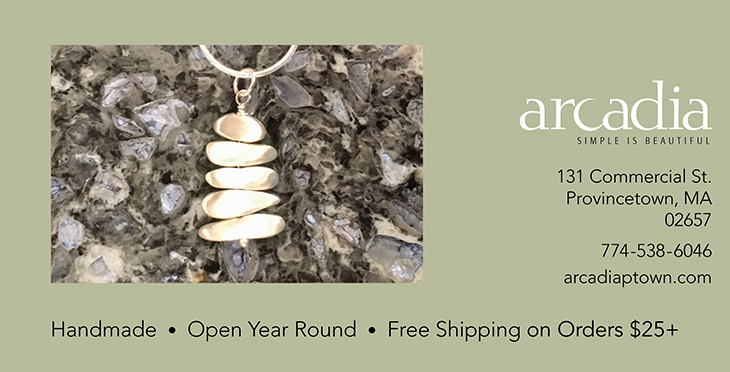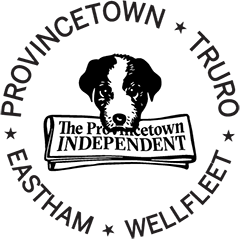For the past few years, Karen Cappotto and James Ryan, co-founders of the Modern Provincetown Collagists, have mounted an annual exhibition at the Commons on Bradford Street celebrating collage as an art form. This year, their exhibition resounds with the punkish energy of the first Provincetown Outsiders Festival, of which it is a part. They have curated a show titled “Heresy: A Scrapbook of Rebellion,” on view at the Commons until May 12.
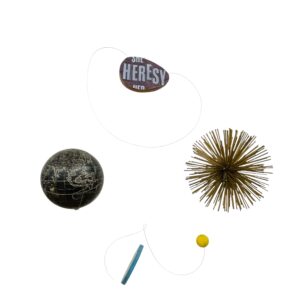
Cappotto describes the collagists group as both tightly knit and loose. “We know who we are,” she says, but it’s not an exclusive clique. Their mission is to advance the work of artists making collages.
“There’s a kind of hierarchy in mediums,” says Cappotto. “People look at collage like it’s a second cousin to painting.”
The current show is a tribute to Al Hansen, who was a member of the Fluxus art movement, which prized process over product. In the 1960s, he was also one of the first artists to engage in “Happenings” — a term used to describe art that is performed with the intention to shock and directly engage an audience.
Hansen, who died in 1995, was the curator of the HCE (Here Comes Everybody) Gallery in Provincetown in the early 1960s. He is perhaps best known for his Hershey Bar-wrapper collages, which is where the inspiration for the title of “Heresy” came from, says Cappotto.
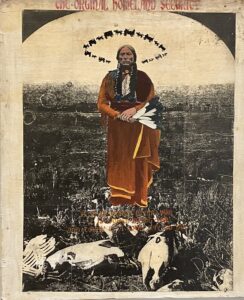
Collage and Fluxus both let their frayed edges show. These art forms are known for their embodiment of the physical act of making. The results are often unpolished and improvisational. “It’s political, in a weird way,” says Cappotto. “It’s not what we’re groomed to do.”
“Heresy” includes the work of 40 local artists, each contributing one piece. There were no size restrictions on submissions, and the pieces vary in nearly every way. The works are arresting, with their staring eyes, confrontational colors, and evidence of humanity in the rough edges of cut paper and traces of glue. It’s a powerful thing, says Cappotto, to be in a room “surrounded by the things people make.”
MP Landis’s contribution, a piece titled Anything, is one of the more disturbing in the show: two shining eyes and a mouth full of glistening teeth protrude through cutouts in a blue facade. Behind the teeth, a uvula dangles.
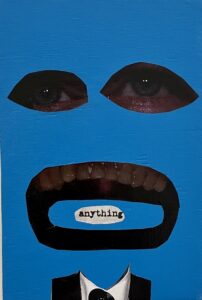
Celeste Hanlon limits all her collages to two elements. In Venus de Milo & David, two figures from art history confront each other. It is like a moment of silence in a loud room.
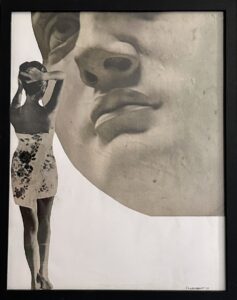
Mike Wright made a Fluxus box full of triangles she cut from discarded artists’ palettes. Fluxus boxes are containers — cartons, suitcases — full of objects and materials gathered by the artist. They’re intended to be handled any way the viewer deems appropriate. Wright wants visitors to take pieces of the palettes away with them.
Cappotto’s own contribution is a piece called Last Train from a previous exhibition called “The Story of Lace.” The collage feels jubilant, a noisy farewell scene from a story unknown.
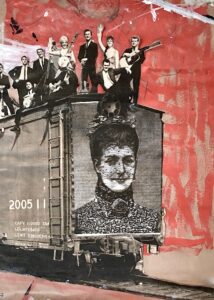
As part of her curation of “Heresy,” Cappotto led a collage workshop on May 6 at the Commons. “A lot of people don’t understand that they have something within them that they can express in an art form,” she says. “Collage is an accessible medium.” You don’t have to know what you’re doing to begin, she says. “You certainly remember cutting and pasting at school.”
Cappotto has been making collages since she was a child. She made banners for her church by collaging felt on burlap and created mobiles for the music room at her school. “Before I knew what I wanted to do, I was doing it,” she says. “Collage was the first medium I ever felt comfortable with.”
And for Cappotto, collage wasn’t just for fun. It was a way to express emotion that otherwise might have remained repressed. She was an anxious child, she says. “Collage gave me a voice when I was not comfortable.” Looking back, she says, her hours spent cutting and pasting were an attempt at control when she had little or none. “Sometimes I see a collage I made years ago,” she says, “and only now do I understand it.”
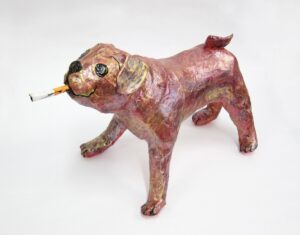
Later, studying creative writing at Boston College, Cappotto returned to collage unexpectedly. She had been taking some art classes on the Newton campus and had thrown out one of her collages in the print room’s trash bin. A professor who knew her plucked it out and published it in the college’s literary magazine, The Stylus. Cappotto’s introduction there as an artist rather than a writer foretold the direction her life took.
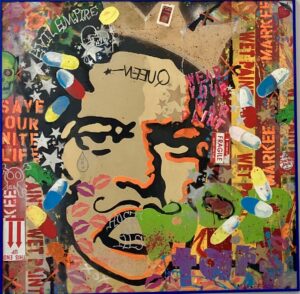
Cappotto now makes paintings in a studio on the second floor of the Provincetown Post Office. At home, she makes collages “all the time.” Much of her process is unconscious association, she says. Her collages are narrative, but she doesn’t start with an idea of a story. She lets the materials in front of her tell her what to do and where to go.
“I feel like collage has a freshness to it,” says Cappotto. Though it’s got history, she says, “It’s immediate.”
Collage at the Commons
The event: “Heresy: A Scrapbook of Rebellion,” collages of 40 local artists
The time: Through May 12
The place: Provincetown Commons, 46 Bradford St.
The cost: Free
